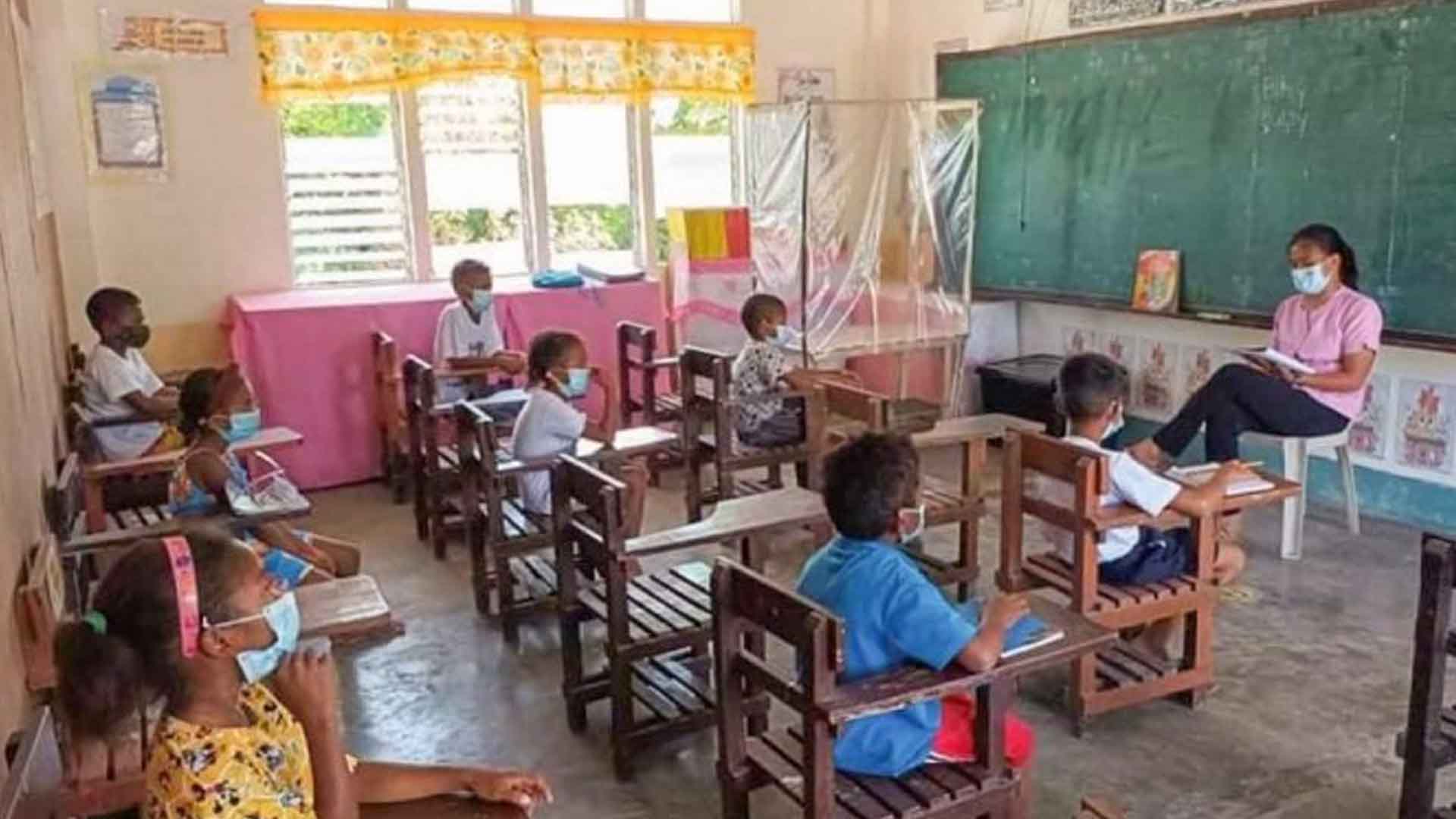A health official on Monday said learners participating in limited face-to-face classes are safe from Covid-19 infection even without plastic barriers installed on their tables, noting that adhering to health protocols is enough.
Health Undersecretary Maria Rosario Vergeire said adequate ventilation and implementing minimal capacity inside classrooms are effective ways to prevent infections during classes.
“So, with or without the plastic barriers as long as we can comply with the physical distancing, adequate ventilation and symptomatic screening across the different school children and teaching and non-teaching personnel, ay maaari tayong makapagsiguro ng kaligtasan ng ating mga kabataan (we can ensure the safety of the learners),” Vergeire said in an online media forum.
About 100 public schools reopened Monday to limited face-to-face classes in areas identified as low-risk for Covid-19, more than a year after being closed due to the pandemic in March last year.
These schools have passed the risk assessment conducted by the Department of Health and the Department of Education’s facility evaluation.
As a precaution, some schools have set up plastic barriers inside classrooms, separating students from the teachers and other learners.
Plastic barriers are common in public places but experts said these have little effect on the virus and may not be as effective at stopping the spread of coronavirus infection.
“Itong plastic barriers it depends on how we’re able to implement that, kasi ‘yung sa jeep ‘di ba plastic tapos kapag nagalaw ng isang tao napupunta sa mukha ng isang tao, so parang ‘di rin sya naging effective para gamitin (These plastic barriers, it depends on how we’re able to implement that, those in the jeep they touch the face of the passenger when moved so it’s not effective) to prevent infections,” Vergeire said.
She noted that the plastic barriers used in some schools are made of acrylic, which she said was “more appropriate”.
“But we also understand that because of limited resources, not all schools can have this,” she said. (PNA)








